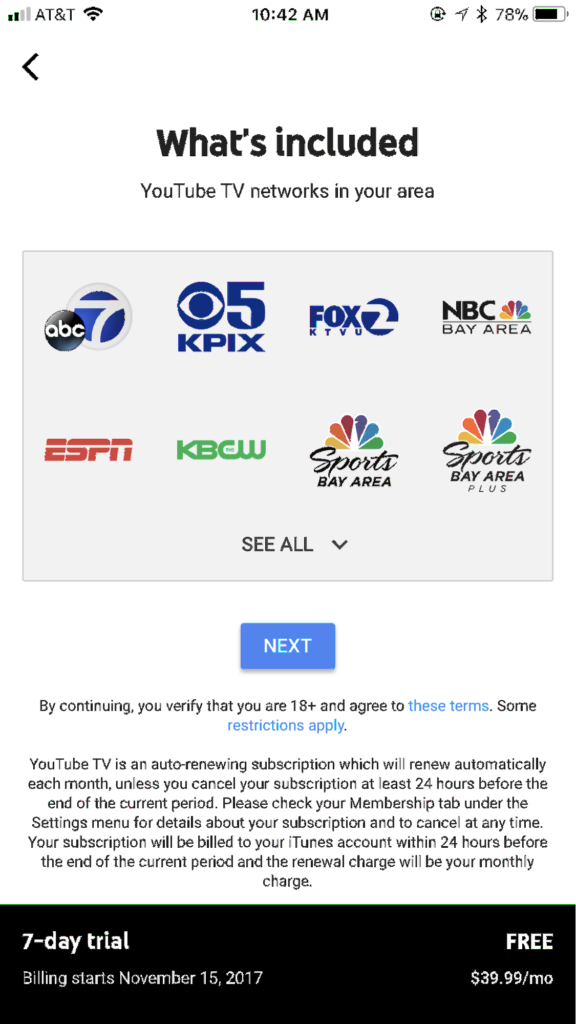
The Latest Social Video News: YouTube TV App, Snapchat Audience Targeting Tools, and More
December 7, 2023Social video platforms are always innovating, adding (or borrowing) features to outmaneuver their rival platforms. After all, the hustle for audience eyeballs — and ad dollars — is only getting more intense. Here are the key updates from the video platforms that you need to know about:
YouTube
Watch out, cable: YouTube is coming for the living room audience. The platform unveiled a new YouTube TV app for connected TVs, which allows viewers to watch live programming from more than 40 networks, as well as content from their favorite YouTube creators. Platforms are increasingly investing in connected TV features to help advertisers reach living room viewers, especially as more and more consumers cut their cable subscriptions (or opt to never subscribe in the first place).

YouTube also announced an integration with Ticketmaster, which allows viewers to learn about upcoming shows and find ticketing information on official music videos. This feature could positively impact artists — particularly rising artists — who can leverage the size and passion of the YouTube audience to drive ticket sales, and opens up the potential for additional integrations in the future.
YouTube also took several steps to crack down on unsafe content for kids, implementing a new policy to age-restrict or remove videos that use family-friendly keywords and characters inappropriately — now, users can flag videos that contain this specific type of inappropriate content.
Facebook unveiled a new Canvas template for collection ads this month. The immersive mobile experience uses lifestyle images (of people, places, or experiences) tagged with products, designed to create a more meaningful branded experience, and help drive three business objectives: acquiring new customers, showcasing a business, and selling products.
It can be tricky for advertisers to optimize their content to appear correctly across Facebook, Instagram, or the Facebook Audience Network. With this in mind, Facebook now offers a placement asset customization tool, allowing advertisers to adjust how specific content appears across its ad network.
Instagram now autoplays certain videos with the sound on. If a user toggles the audio on while browsing the platform, Instagram will continue to play all subsequent videos with the sound on until the app is closed or the audio is turned off. This is a big win for advertisers, as brand videos will now play with sound on more often — which could result in up to a 43% increase in ad recall compared to videos that play with the sound off.
Twitter is now pushing more users to click on video ads with a new creative format called Video Website Cards. During beta tests, Twitter found that the new format drove 2X more click-throughs than the industry benchmark for mobile video ads — making Video Website Cards well-suited for direct response marketers looking to increase their conversion rate.
Snapchat
Snapchat recently released two long-awaited tools: audience filter targeting, and Snap Pixels. The first allows advertisers to target filters against audience interests, time, age, genders, and other targeting parameters, not simply geographic locations. Snap Pixels enable marketers to track specific actions on websites after a viewing an ad on Snapchat. Both updates show Snapchat is listening to advertiser demands for more advanced advertising capabilities on the platform.
Snap, Inc. is also planning a major overhaul of its app and strategy. Faced with slowing user adoption, low stock prices, and limited hardware sales, it’s redesigning its flagship app to promote usability, planning to expand in developing markets, and working more closely with influencers — all intended to help jumpstart user growth.
Spotify
Spotify is rebooting its video strategy as it looks to expand beyond its core music streaming service. It’s experimenting with new media formats unique to Spotify — such as Spotlight, which combines audio, images, and video in an innovative way — and exploring new investments in video and podcasts, seeking to further entertain its 140M active users.
Pinterest released its take on QR codes: Pincodes link to fashion and food boards after a user scans a QR code. The platform also launched a new tool, dubbed Lens Your Look, which allows users to refine a search using their camera. For example, a user could take a photo of their jacket and search for matching products to complete their outfit.
Amazon
Amazon is going after agency and brand advertisers with the rollout of its new API, which allows for self-service ad buying. Currently, Amazon offers three ad formats purchased on a cost-per-click model: sponsored products, display ads for products, and search ads.
Want more insights? We unwrapped the food and beverage space across social video platforms to help you better develop your video strategies through the holidays and into 2018. Download our latest industry study now.